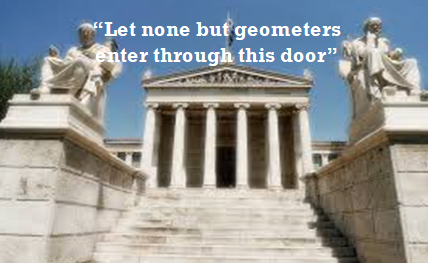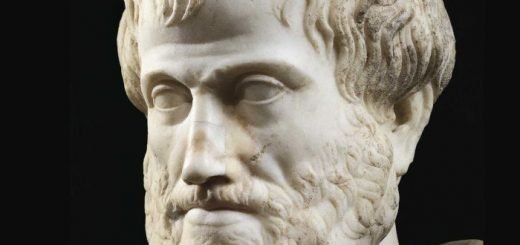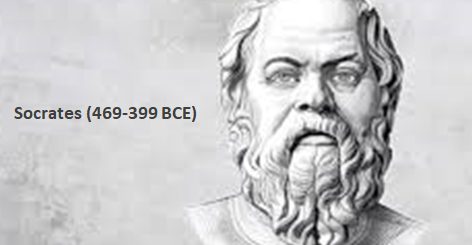Plato’s Academy: Origin Story, Location, Scholars, & Legacy
Many historians have long maintained that Plato’s Academy holds the reputation of being the world’s first university-like institution. It did not resemble your typical or modern-day university in the sense that the structures were a bit informal. However, it had one very peculiar characteristic of a learning institution: a quest for greater understanding of the world.
The Academy was a gathering place that allowed logical reasoning and knowledge sharing to flourish. It was ancient Greek’s foremost (perhaps only) hub where intellectuals of varying disciplines convened in order to advance scientific thoughts. One of such minds was Aristotle (384-322 BCE).
The usual subjects studied at the Academy were philosophy, astronomy, and mathematics. The overarching belief set of the Academy was to make sense of the world around using scientific observations.
The questions and answers below have been taken from different historical accounts in order to paint a vivid representation of how Plato’s Academy was in ancient Greece and even the Roman era.
Where was the Academy located?
Ancient historical accounts state that Plato acquired a piece of land (a grove actually) slightly on the outskirts (northwestern) of ancient Athens. The place had several olive trees and was considered by many a sacred site. Back then, the olive tree was also seen as the undisputed national tree of Athens. The tree had several medicinal and functional properties in the sense that it was used as a fuel source, a fruit, and oil. It symbolized the goddess Athena’s benevolence to Athens. Therefore, it was no coincidence that Plato established his learning institution on a site affiliated to Athena, the goddess of wisdom, crafts, and war.
When was the Academy established?
The year that Plato acquired the parcel of land for the Academy is believed to be around 387 BCE. Aside from it hosting olive grove, the Academy’s site had a sports center and a park. As a matter of fact, the Academy got its name from the site’s name.
How did it get the name “Academy?
The site where Plato’s Academy was set up was associated with the Attic hero Akademos (also known as Hecademus) in Greek mythology. Akademos saved the ancient city of Attica from Castor and Pollux’s invasion. By telling Castor and Pollux (the Tyndarids) where the Athenian king Theseus hid their sister, Helen of Troy, Akademos halted what would have been a complete destruction of Attica. Legend has it that on several occasions, conquering armies and cities went on to spare the land that belonged to Akademos.
The above explanation passes off as another reason why the school’s site was considered sacred by successive generations and Athenians. In some circles, Plato’s Academy was also known as the groves of Academe”.
Why was the Academy established?
Technically speaking, the school was not out rightly known as a school for the teaching of philosophy. The tagging of it as a school of philosophy was done during the time of the famous Roman historian, Cicero (106-43 BCE).
In the eyes of the law during Plato’s time, the school was labeled as a place for the worship of the Muses (a group of lower Greek goddesses of literature, science, and arts). However, as time went by, the school began to incorporate more and more scientific disciplines and art related subjects.
What were some of the subjects taught at the Academy?
Aside from its minuscule links with religion, Plato’s school could boast of very refined and learned persons in the fields of mathematics, natural science, political philosophy, dialectics, poetry, and ethics. The curriculum of the school was primarily shaped by ideas of Socrates and Plato.
With the passage of time, however, the subjects and intellectual areas changed slightly. Every change came with its philosophical idea. For example, the first 20 or so years of the Academy primarily focused on the study of moral virtues and dogma. This was entirely based on Platonic ideas and ideals. Examples of scholars in the Old Academy were Anaxagoras, Democritus, Empedocles, Xenophanes, Aristotle, Speusippus, Crantor, Polemo, Crates, and Parmenides.
Long after the passing of Plato, a slightly different phase of philosophy was ushered in. Under the stewardship of Arcesilaus (c. 316-c. 241 BCE), the Academy became a little bit less dogmatic. In the middle to latter stages of the Academy, the philosopher Carnades stirred a lot of opposition to the ideas and philosophies of stoics and Epicureans. In addition to Carnades, other examples of scholars in that era were Philo, Clitomachus, Evander, Lacydes and Hegesinus.
The third phase of the Academy slightly refined Plato ideas which stated that there was a reliable and universal truth (Logos). This group of people were described as skeptical philosophers that did not necessarily pursue the concept of an absolute truth. The school’s philosophy simply became a series of rhetoric.
What were the teaching methods used in the Academy?
Both the curriculum and teaching methods of the Academy were based on Plato’s Socratic Method. However, unlike Socrates who spent more time asking questions than giving speeches, the Academy included lectures and instructions, and seminars. There were also significant dialogues and discussions between ‘students’ (junior members) and ‘teachers’ (senior members)

“Let none but geometers enter through this door” is widely regarded as the motto of Plato’s Academy
What was the motto of the Academy?
Although not properly verifiable, some historians have come to accept that the motto of Plato’s Academy was “Let none but geometers enter through this door”.
Who was the first headmaster of the Academy?
The principal of the school was given the title- Scholarch. This simply means “headmaster”. The post was a life-long position. The principal was not appointed but elected by the members of the school. The first principal of the Academy was none other than the founder himself, Plato.
After Plato’s death (in 347 BCE), there ensued a bit of power struggle that ended up forcing Aristotle to leave the Academy. He went on to set up his own academy called the Lyceum. The friction started when the members of the school picked Speusippus as the head of the school instead of Aristotle. Feeling aggrieved, Aristotle brought to an end his 20-year long stay at the Academy.
Who was the last headmaster of the Academy?
Philo of Larissa ended up being the last principal (Scholarch) of the school. This was after the school was razed to the ground by the Roman army led by General Lucius Cornelius Sulla.
Who are some of the very famous alumni of the Academy?
The early set of intellectuals and philosophers of the Academy included people like Archytas of Tarentum, Theaetetus of Sunium , and Neoclides at the helm of affairs. Other Academy senior members were Domcritus, Polemo, Crantor, Xenophanes and Crates.
The Academy was also famed to have nurtured and tutored great philosophers such as Aristotle, Parmenides and Eudoxus of Cnidos. The Academy did not have the label ‘student’ per se. Those who enrolled in the school were simply referred to as junior members of the Academy.
What was the admission criteria at Plato’s Academy?
Not much is known about how people got to enroll at the Academy. During its formative years, it is believed that Plato operated an open-door policy where all one needed to have was complete passion for philosophy and logical reasoning. One’s thirst for knowledge and understanding of the physical world was likely to be the only admission requirement.
How long did the Academy exist?
Give or take, the Academy lasted for several centuries, even long after its founder Plato died. From the year of its inception (387 BCE), the Academy continued relatively uninterrupted until the year 86 BCE when it was devastated by the Romans.
However, the Neoplatonist philosophers of Rome re-booted the school in the early 5th century CE. Studies and learning continued for about three decades until the school was shut down. In 529 CE, the Byzantine emperor Justinian I (483–565 CE) closed down the place because he considered the Academy a place of pagan worship and practices. The pagan practices conflicted with the emperor’s Christian values.
What is the greatest legacy of the Academy?
When it was founded in the 4th century BCE, very few of the members knew that one day their works would come to form the DNA of modern philosophical and scientific thoughts. Today, we all can strongly relate to the principles of higher learning and inquiry into the universe. Prior to the establishment of Plato’s Academy, the thirst for greater understanding, debates and discussion had not caught up with the masses yet. The Academy played a vital role in popularizing philosophical studies and disciplines in ancient Greece.
Virtually all the modern disciplines that we hold in high esteem have to a large extent been influenced by the ground-breaking works and ideas that emanated from Plato’s Academy. Centuries later, those ideas came to serve as the fulcrum of our scientific inquiry and global progress.

What remains of Plato’s Academy in Greece today.
Other very interesting facts about Plato’s Academy
- During its early years, the Academy did not have a physical structure. Plato and his friends simply gathered in the olive grove and discussed different small and large subjects.
- Most historical sources claim that only men were allowed to enroll. However, other sources claim differently. They state that the school did not close its doors to women.
- Another very interesting fact about the Academy is that it charged no fees for its members.
- The Academy had a periodic torchlight and sports festival that involved participants racing to the altar of Prometheus in the olive grove. Prometheus was a mythical figure seen by many Greek poets and philosophers as the bringer of fire and intellectual reasoning to the race of men.
- According to Diogenes, the head of the Old Academy was Plato; the Middle Academy saw Arcesilaus in charge; and the New Academy had Lacydes as its headmaster.
- The Academy was once destroyed during Roman general Lucius Cornelius Sulla’s sack and conquering of Athens. This raid happened in 86 BCE. The Academy suffered significant damages and most of its artifact were destroyed or looted.
- The demise of the Academy forced most of its members to head eastward into the Middle East. They were able to salvage a number of school artifact and writings. In the East, the Persian King Khusrau I Anushiravan welcomed the fleeing Greek philosophers with open arms.
- Even after tens of centuries, modern educational institutions and universities all across the world still have similar characteristics as that of Plato’s Academy.
- Tourists interested in seeing the exact location of Plato’s Academy can find it 3 km from the Acropolis of Athens. The site is near the Agricultural University of Athens. It is opened to the public free of charge.



























